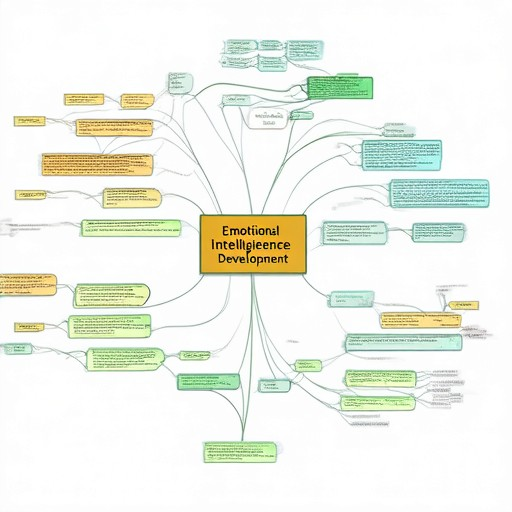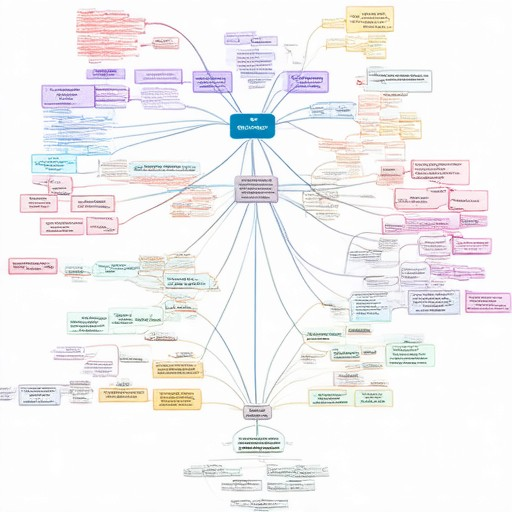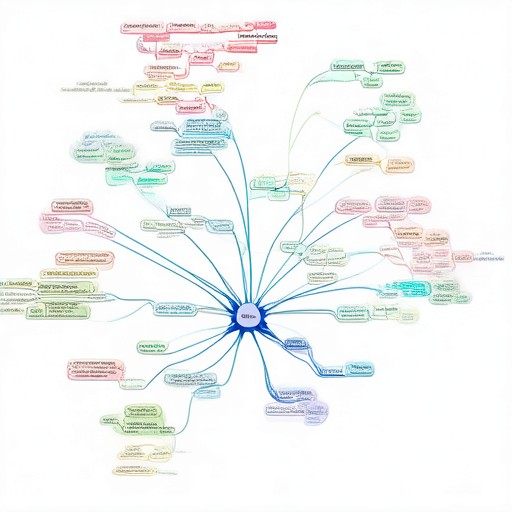Emotional intelligence is a powerful skill that shapes how we navigate our lives, yet many of us overlook its profound impact. From making critical decisions to fostering meaningful relationships, our ability to understand and manage emotions plays an indispensable role in our personal and professional journeys. In this comprehensive exploration, we’ll delve into the intricate stages of emotional intelligence development, uncovering the essential strategies to cultivate this vital skill. Whether you’re seeking to enhance your personal growth, improve teamwork in the workplace, or teach children the fundamentals of emotional well-being, this guide offers valuable insights and practical advice. Join us as we embark on a transformative journey to unlock the full potential of emotional intelligence development.
Key Takeaways
– Mastering Self-Awareness: Recognize and label emotions, forming the foundation of emotional intelligence.
– Developing Social Awareness: Foster empathy and understanding of others’ perspectives, enhancing social connections.
– Learning Emotional Regulation: Acquire techniques to manage emotions constructively, reducing stress.
– Building Responsible Decision-Making Skills: Understand consequences of actions, promoting ethical reasoning.
– Establishing Strong Relationships: Focus on effective communication and conflict resolution, nurturing healthy bonds.

What Are the 4 Stages of Emotional Intelligence Development?
The development of emotional intelligence (EQ) is a multifaceted process that involves self-awareness, self-regulation, motivation, and social skills. Here are the four primary stages of emotional intelligence development:
- Self-Awareness
- Understanding and recognizing your own emotions.
- Identifying personal strengths and weaknesses.
- Learning to manage stress and remain calm under pressure.
- Recognizing patterns in your behavior and reactions.
-
Self-Management
- Regulating emotions effectively, avoiding impulsive actions.
- Making decisions based on rational thought rather than emotions.
- Setting personal goals and staying motivated.
- Practicing gratitude and maintaining a positive mindset.
-
Social Awareness
- Empathy: Understanding others’ perspectives and emotions.
- Building strong relationships through communication.
- Recognizing social cues and non-verbal signals.
- Demonstrating active listening and adaptability.
-
Relationship Management
- Building and maintaining meaningful connections.
- Resolving conflicts constructively and peacefully.
- Expressing compassion and support for others.
- Being open to feedback and willing to grow.
By mastering these stages, individuals can enhance their EQ, leading to better decision-making, improved communication, and stronger interpersonal relationships.
At What Age Do Kids Develop Emotional Intelligence?
Emotional intelligence begins to develop in early childhood, often starting around preschool age. Research suggests that children show early signs of emotional intelligence between the ages of 3 to 5 years old.
Early Signs of Emotional Intelligence
- Basic Emotion Recognition: Children start to recognize and label their own emotions, such as happiness, sadness, or anger, around this age.
- Simple Emotional Responses: They begin to understand and express basic emotional states, often mirroring what they observe in others.
The Role of Play
Preschoolers engage in pretend play, which helps them explore and understand different roles and emotions. This type of play fosters empathy and the ability to perspective-take, both key components of emotional intelligence.
Parent and Caregiver Influence
Parents and caregivers play a crucial role in shaping a child’s emotional intelligence. Responsive care, positive reinforcement, and modeling emotional expression help children learn to regulate their emotions and respond appropriately to others.
School-Age Development
By elementary school age, children begin to develop more advanced emotional intelligence skills. They learn to manage conflicts, navigate friendships, and understand group dynamics, all of which require emotional intelligence.
Continuous Development
Emotional intelligence is not static; it continues to develop throughout childhood and beyond. Life experiences, relationships, and challenges shape and enhance emotional intelligence as children grow older.

What Are the 5 Components of Emotional Intelligence?
Emotional intelligence, as defined by psychologist Daniel Goleman, consists of five core components that enable individuals to understand, manage, and navigate their own emotions as well as those of others. These components are:
- Self-Awareness : The ability to recognize and understand one’s own emotions, strengths, weaknesses, and values.
- Self-Management : The skill of managing one’s emotions and impulses, allowing for better decision-making and stress management.
- Social Awareness : The capacity to perceive and interpret the emotions of others, which includes empathy and social skills.
- Relationship Management : The ability to build and maintain positive relationships with others by effectively communicating and responding to their emotions.
- Self-Empathy : The practice of being kind and compassionate toward oneself, which contributes to overall well-being and resilience.

Understanding the Five Key Emotional Development Stages
Emotional development in children is a crucial aspect of their overall growth and well-being. It plays a significant role in shaping their personalities, social interactions, and decision-making abilities. According to psychological studies and experts, children go through distinct emotional development stages that contribute to their ability to understand and manage their emotions effectively.
The five primary emotional development stages revolve around key skills that children learn to master as they grow. These stages are essential for fostering resilience, empathy, and healthy relationships. Here’s a breakdown of each stage:
- Self-Awareness:** This stage involves helping children recognize and understand their emotions. By labeling feelings like happiness, sadness, anger, and fear, children begin to gain insight into their internal states. This awareness is the foundation for emotional intelligence and helps them navigate their environment more effectively.
- Social-Awareness:** As children interact with peers, family members, and others, they learn to observe and interpret social cues. This stage fosters empathy, allowing them to understand others’ perspectives and respond appropriately. It also helps in forming meaningful connections and building trust.
- Emotional Regulation:** Managing emotions is a critical skill that children develop during this stage. Techniques like deep breathing exercises, counting to 10, or physical activities like running or dancing help children calm down when they feel overwhelmed. This skill equips them to handle stress and challenges in a constructive manner.
- Responsible Decision-Making:** During this phase, children begin to understand the consequences of their actions. They learn to weigh the outcomes of their decisions and consider the impact on themselves and others. This stage lays the groundwork for developing ethical reasoning and problem-solving skills.
- Relationship Building:** Establishing and maintaining healthy relationships is a key focus of this stage. Children learn to communicate effectively, listen actively, and resolve conflicts constructively. These skills help them form strong bonds with friends, family, and others, fostering a sense of belonging and security.
At Live On Blogs, we believe that emotional development is a continuous process that shapes who we are and how we interact with the world. By supporting our children through these stages, we can help them build the necessary tools to thrive in life. Explore more resources on emotional intelligence and child development on our emotional intelligence and child development pages to discover practical tips and insights for nurturing your little ones.
Three Stages of Emotional Development
The emotional development of children can be divided into distinct stages, each marked by significant changes in their ability to understand and express emotions. Here are the three primary stages:
- Infancy (0–12 Months):
- Basic Emotions: Infants primarily express basic emotions such as hunger, discomfort, and basic contentment. Crying is their primary method of communication.
- Development Milestones: By 3 months old, infants begin to distinguish between feeding times and other activities, showing frustration when they can’t find the breast or bottle. Around 6 months, they start to exhibit more complex emotions like anger or fear when separated from their caregiver.
- Toddlerhood (12–36 Months):
- Exploration and Curiosity: Toddlers are more mobile and curious, leading to a broader range of emotions. They may feel excited about crawling or walking, angry when they can’t reach something, or scared by falling or loud noises.
- Social Interactions: At 18 months, toddlers start to express pride in their achievements, anxiety when separated from their parent, and frustration when they can’t perform tasks independently.
- Preschool Age (3–5 Years):
- Advanced Emotional Understanding: Preschoolers demonstrate a deeper understanding of emotions, expressing sadness, anger, and joy. They also show empathy, consoling peers, and forming stronger attachments.
- Complex Social Interactions: This stage sees increased complexity in social interactions, with children learning to regulate their emotions and engage in more nuanced relationships.
Each stage builds upon the previous, fostering greater emotional intelligence and social connectivity as children grow.

Stage from 2 to 6 Years
The period from 2 to 6 years is commonly referred to as early childhood . This stage is marked by significant developmental milestones, including cognitive, social, and emotional growth. During this time, children begin to explore their environment more independently and develop a sense of play, which is crucial for their development.
Early childhood is often divided into different phases:
- Toddlerhood (2–3 years): Characterized by rapid physical growth and the beginning of language development.
- Preschool Age (3–6 years): A time of increased curiosity and creativity, with a focus on learning through play and social interaction.
This stage is vital for laying the foundation of a child’s future learning and growth, making early childhood education highly valued.




0 Comments